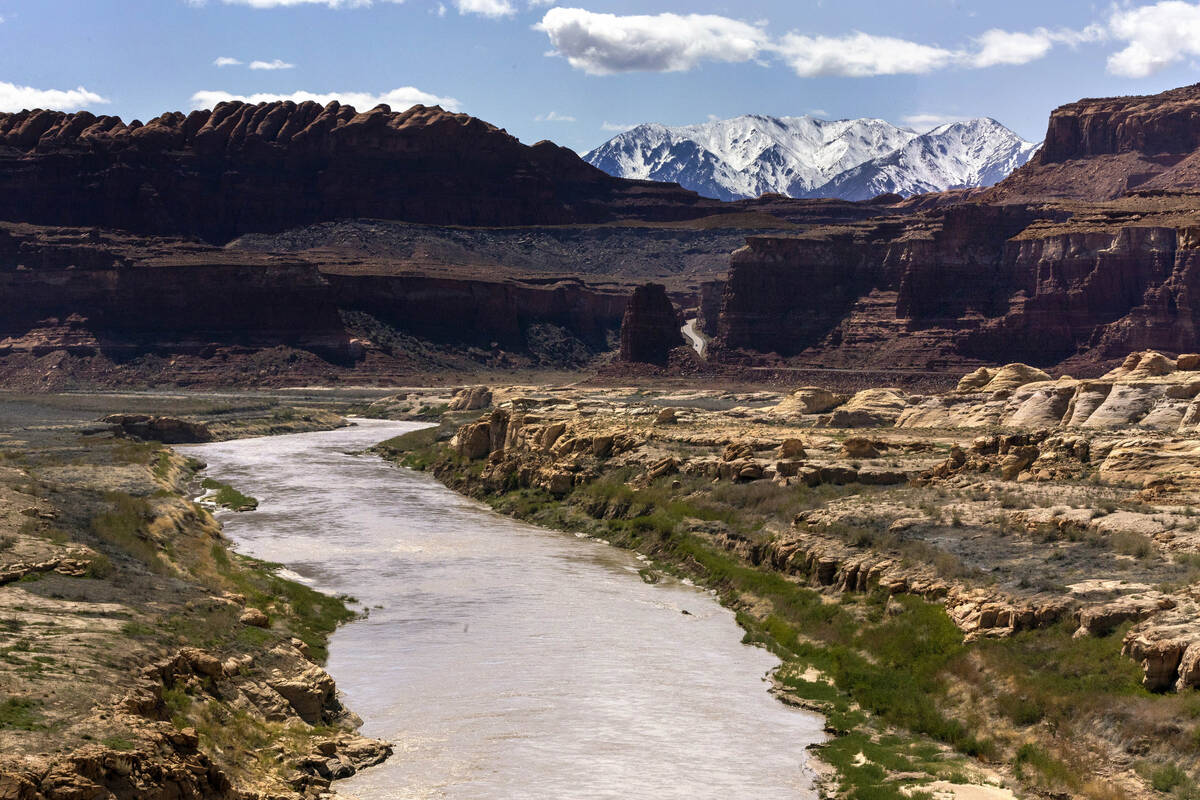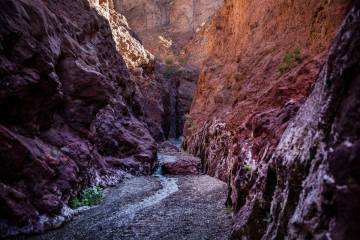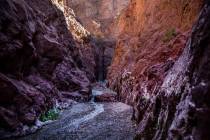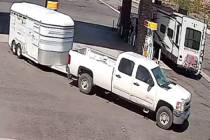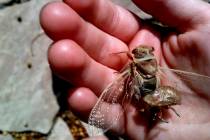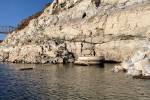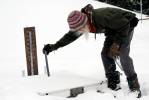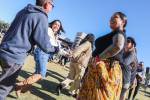Where does Colorado River water go? Scientists have finally found out
Hay meant to feed farm animals accounts for an overwhelming share of Colorado River water use in the Southwest, scientists have found.
Many Southern Nevadans are all too familiar with the West’s water woes. Las Vegas is almost entirely dependent on water from the river-fed Lake Mead, the country’s largest reservoir, which has hovered near historic lows as of late.
A new study released Thursday pins down a more definitive assessment of how water from the river is used, confirming suspicions that water scientists have held for decades. Only a fraction of the river’s water makes it to what’s known as the Colorado River Delta, where it would flow naturally without human intervention.
“We were able to build a much more holistic and complete picture of where all the water goes,” said Brian Richter, the study’s lead author and president of global water education organization Sustainable Waters. “Irrigated agriculture consumes about three times the volume of all of the cities and industries combined.”
Scientists found that the thirstiest crop is alfalfa and other hays that feed cows, accounting for 46 percent of total water use from the river. Agriculture use in general totaled more than half.
Consumption in cities like Las Vegas has been on a downward trend because of tactics like cash-for-grass and septic-to-sewer programs. That shows in the data, with municipal water use at 18 percent.
A smaller portion of water is lost to evaporation in reservoirs like Lake Powell and Lake Mead and what’s known as “evapotranspiration,” or water loss to the atmosphere and the ground.
Nevada’s agriculture pales in comparison with the vast, lush farmlands of California’s Imperial Valley or Yuma, Arizona. It’s also mostly concentrated in more rural parts of the state that are dependent on groundwater pumping rather than water from the river.
Still, Nevada has almost 668,000 acres of irrigated lands, according to the U.S. Department of Agriculture’s 2022 census. Efforts are underway, too, to make alfalfa growing more efficient.
Data could inform negotiations
The numbers come at a key time in the river’s history.
Colorado River Basin states are battling over how to redistribute river water among them, and climate change is worsening the drought. So, this data is helpful in establishing a baseline understanding, said Jonathan Overpeck, the dean of the University of Michigan’s School for Environment and Sustainability.
“This will make it a lot easier for the negotiators to get it right,” said Overpeck, who didn’t work on the study.
The timing of the release was intentional to give state leaders the best information to make decisions about the next 20 years, said Richter, the study’s lead author.
“There needs to be an understood cap or limit placed on the total volume of water used for human uses,” Richter said. “We’re going to have to work under nature’s limits.”
It’s up to leaders who serve the 40 million people who rely on the river to figure out how to move forward.
Sarah Porter, director of Arizona State University’s Kyl Center for Water Policy, said the study builds upon what water scientists have long inferred, but solutions to agricultural water use have to be nuanced.
In the West, farmers often have the most senior rights to use river water and many of them grow crops year-round, said Porter, who wasn’t involved in the study. If they don’t plant alfalfa, they very well could transition to other crops.
A reduction in agriculture also could strain economies across the Southwest where it’s the main industry, she said.
“Sometimes, studies like this feed into a kind of simplistic narrative,” Porter said. “But it’s complicated.”
Contact Alan Halaly at ahalaly@reviewjournal.com. Follow @AlanHalaly on X.



